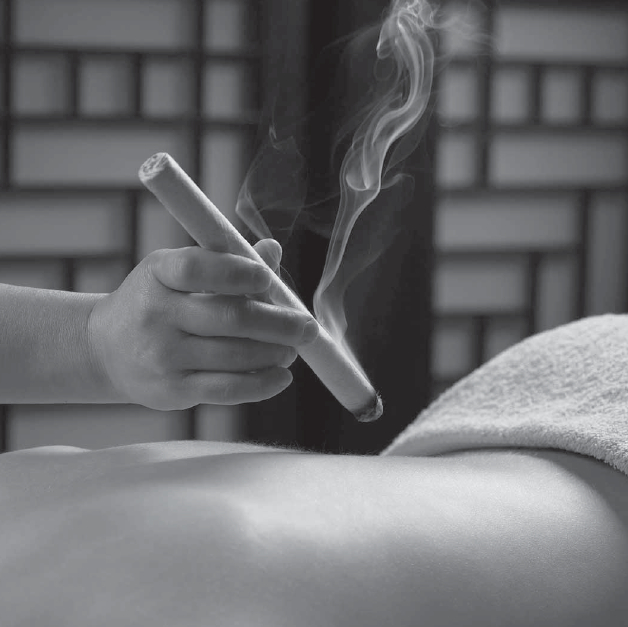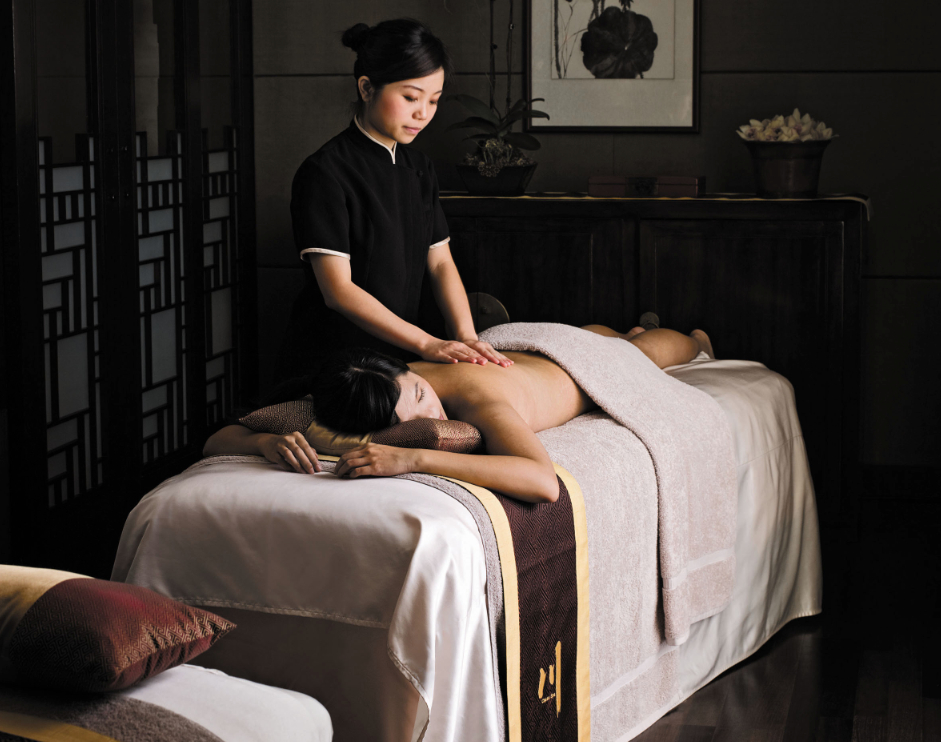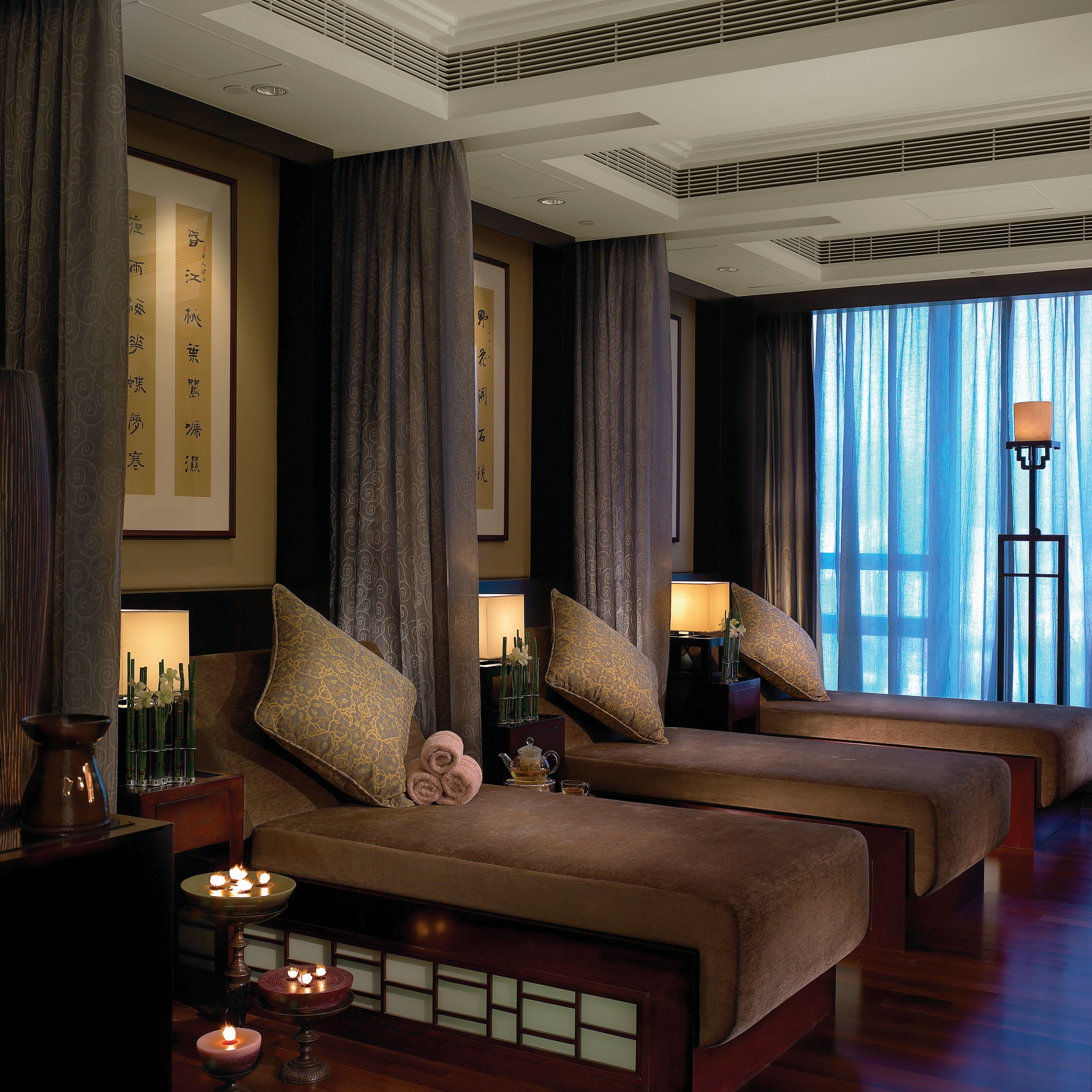We head to the award-winning spa at Langham Place to try out stone therapy and moxibustion
As the old nursery rhyme goes, sticks and stones may break my bones, but can they also be instruments of healing? That was the question going through my mind at a recent visit to the Chuan Spa at Langham Place in Mong Kok, when I signed up to a two hour and fifteen minute treatment involving both hot and cold stones, as well as burning herbal sticks. The spa recently won Best Luxury Hotel Spa at the 2012 World Luxury Spa Awards, and it’s not surprising, given the amenities such as Japanese onsen bath, plus a rather unusual focus on traditional Chinese medicine (known as TCM).
Qualified TCM practitioners judge your state of well-being and see which of the TCM treatments are most applicable. The options include acupuncture, moxibustion, cupping and gua sha. Acupunture needs no introduction, but the other three treatments may be a bit more unfamiliar. To give a brief introduction, moxibustion involves the burning of a Chinese herb known as moxa, or the mugwort, and holding it close to an acupressure point for several minutes. The heat that this produces is meant to be conducive to deeper healing, blood circulation and the flow of qi. Cupping, as made known to the west by aficionados such as Gwyneth Paltrow, is when a heated cup is applied to the skin and the pressure from within helps to draw out pain and toxins.

Gua sha translates literally into “scrape away fever”, and it uses the edge of a jade (well, at Chuan Spa anyway, but we’ve also had it done with a regular silver spoon) to scrape away at the skin to help with stagnant blood flow, lymphatic drainage and the removal of toxins. Both cupping and gua sha are slightly painful and result in blemishes of the skin, so I safely opt for moxibustion as my add-on TCM treatment to the signature Chuan Stone Therapy I had already booked in for.
This therapy is an hour and a half long, and it is purported to “balance the yin and yang energies through the use of hot and cold stones”. Before you begin the treatment, you’re asked to fill in a short questionnaire which determines which of the five elements (earth, air, wind, fire, water) your body is most in need of. Mine was earth, and my therapist said that a desire for earth is usually equated with the need for relaxation, and it is also related to your spleen, stomach and digestion problems.
The treatment begins and while the lava stones are initially uncomfortably hot, it becomes more tolerable as I learn to exhale when I feel a slight twinge of pain. And while this is not really what you would call a relaxing treatment, the heat of the stones is undeniably great at undoing all the knots in your muscles. We would especially recommend this therapy to anyone with sports-related muscle aches and pains. The therapist spends the majority of the hour and half with the hot stones, using them to rub them up and down your limbs, as well as resting them on various points on your back.

The cold stone therapy part is much, much shorter. The therapist says that most guests do not actually enjoy having cold stones placed on them, so most ask for a towel to separate the stones and the skin. Coward that I am, I duly ask for the same. With a layer of material between my skin and the freezing stones, I can’t say that it really felt like much. Unlike the hot stone therapy, the cold stones just sit there, and are not used as a massage tool. After a brief 10 minutes of this, we move onto moxibustion.
As mentioned, moxibustion is traditionally performed by a therapist holding a thick wand of mugwort near the skin, and allowing the heat of the burning herb to do its magic. However, at Chuan Spa, it’s a bit more high-tech. The herbs are placed inside a small, circular box and lit on fire. The heat from the burning balls of herbs slowly seeps through the bottom of the box, which is placed either directly on your skin, or more likely, if you have low pain tolerance, on a towel on top of your skin.
Moxibustion is a two-fold treatment, as not only does the heat from the herbs serve to ensure deeper healing and clearing of the qi, but the smell that it gives off while burning is also immensely relaxing. Your therapist will pinpoint where you are most in need of moxibustion: for most office workers, the lower back will be a focal point. For me, as I had picked earth as my element, which suggests problems with digestion, the abdomen was also given a lot of heat and attention.
After over two hours spent on the massage table, I am assisted to the relaxation lounge, with its impressive bird’s eye view of Mong Kok. I was presented with some hot drinks and magazines, but was more interested in retiring to the changing room to check out the Japanese-style onsen bath. Alas, perhaps I had overdosed on heat treatments that afternoon, and the balmy 42-degree water proved too much to handle. But with such unusual and rather effective treatments available (my muscles felt extremely relaxed after), I will be sure to return to Chuan Spa soon to attempt the onsen again. Even if you can’t handle the heat of the onsen, however, do leave time to shower after a moxibustion treatment, as the smell of burning herbs will make you smell like a walking Chinese temple.

